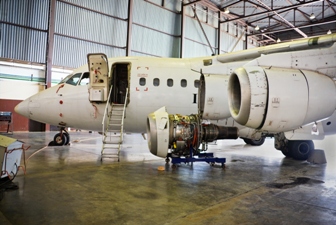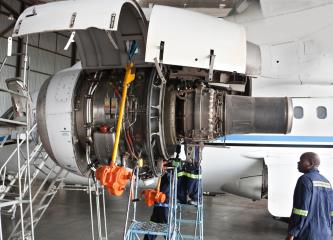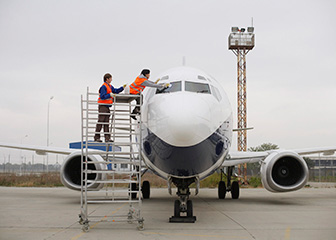How to Become an Aircraft and Avionics Equipment Mechanic or Technician About this section

Some aircraft and avionics equipment mechanics and technicians learn their trade on the job.
Aircraft and avionics equipment mechanics and technicians typically need postsecondary education, such as a certificate from a Federal Aviation Administration (FAA)-approved program. Some enter the occupation with an associate’s degree; others have a high school diploma and train on the job or in the military. These workers typically are certified by the FAA.
Education and Training
Aircraft mechanics and service technicians typically enter the occupation after attending an FAA-approved aviation maintenance technician program. These programs award a certificate of completion that the FAA recognizes as an alternative to the experience requirements stated in regulations. The programs also grant certificate holders the right to take the relevant FAA exams. Programs that are affiliated with community colleges offer students the opportunity to earn an associate’s degree.
Some aircraft mechanics and service technicians enter the occupation with a high school diploma or the equivalent. They train on the job or in the military to learn their skills and to be able to pass the FAA exams.
Aviation maintenance personnel who are not certified by the FAA work under supervision of a certified airframe and powerplant (A&P) mechanic until they have enough experience to sit for the FAA exams.
Licenses, Certifications, and Registrations
The FAA requires aircraft maintenance to be done either by a certified mechanic with the appropriate ratings or authorizations or by someone working under the supervision of such a mechanic.
The FAA offers separate certificates for bodywork (airframe mechanics) and engine work (powerplant mechanics), but employers may prefer to hire mechanics who have both ratings (A&P). The A&P ratings generally certify that aviation mechanics meet basic knowledge and ability standards.
Mechanics must meet minimum requirements, including for age and experience, to qualify for either the A rating, the P rating, or the A&P rating. Completion of a program at an FAA-approved aviation maintenance technician school can substitute for the experience requirement and expedite the time for becoming eligible to take the FAA exams.
The Inspection Authorization (IA) is available to A&P-certified mechanics who meet experience and other requirements. These mechanics are able to review and approve many major repairs and alterations.
Avionics technicians may be certified by their employer for the specific aircraft work they perform. Technicians may get optional certification to substitute for some experience. They also may hold the airframe rating to work on an aircraft’s electronic and flight instrument systems. Information on certifications is available from CareerOneStop.
Avionics technicians who work on communications equipment may need a license issued by the Federal Communications Commission (FCC). Information on state licensing board requirements is available from CareerOneStop.
Advancement
As aircraft mechanics and service technicians gain experience, they might advance to become lead mechanics, lead inspectors, or shop supervisors. Opportunities to advance may be best for those who have an inspection authorization (IA). Mechanics with broad experience in maintenance and repair may become inspectors or examiners for the FAA.
Important Qualities
The following are examples of qualities that are important for these workers to perform their duties. For more information, visit the Employment Projections (EP) skills data page.
Detail oriented. Mechanics and technicians must adjust aircraft parts to exact specifications. For example, they often use precision tools to tighten wheel bolts to a specified tension.
Dexterity. Mechanics and technicians need to coordinate the movement of their fingers and hands in order to grasp, manipulate, or assemble parts.
Mechanical skills. Mechanics and technicians must be able to understand and interpret manufacturer instructions to repair, replace, and assemble aircraft components.
Observational skills. Mechanics and technicians must recognize engine noises, read gauges, and collect other information to determine whether an aircraft’s systems are working properly.
Physical strength. Mechanics and technicians may carry or move heavy equipment or aircraft parts, climb on airplanes, balance, and reach without falling.
Problem-solving skills. Mechanics and technicians must be able to diagnose problems with aircraft equipment and systems to determine the best way to repair them.
 United States Department of Labor
United States Department of Labor












